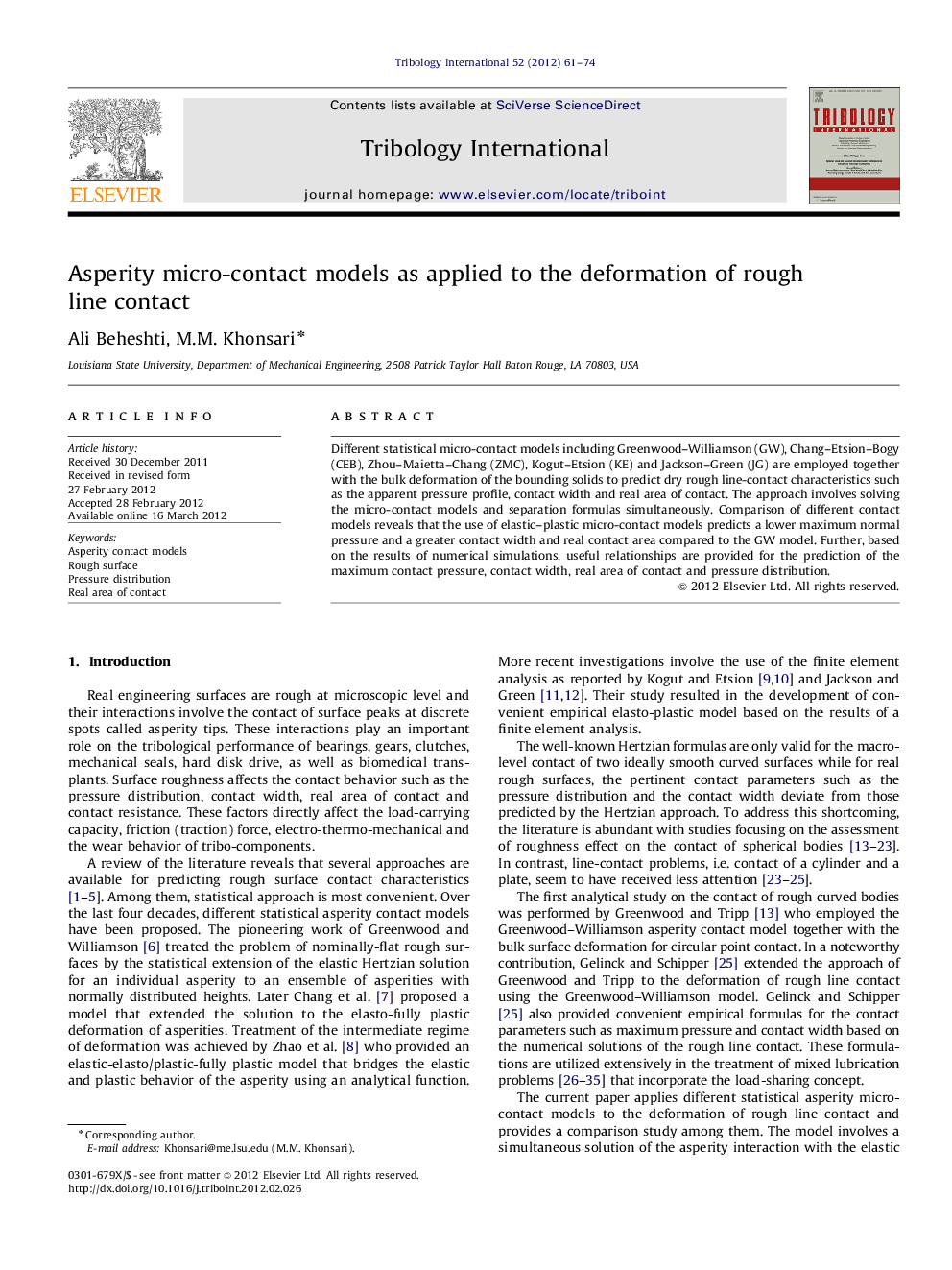| Article ID | Journal | Published Year | Pages | File Type |
|---|---|---|---|---|
| 615314 | Tribology International | 2012 | 14 Pages |
Different statistical micro-contact models including Greenwood–Williamson (GW), Chang–Etsion–Bogy (CEB), Zhou–Maietta–Chang (ZMC), Kogut–Etsion (KE) and Jackson–Green (JG) are employed together with the bulk deformation of the bounding solids to predict dry rough line-contact characteristics such as the apparent pressure profile, contact width and real area of contact. The approach involves solving the micro-contact models and separation formulas simultaneously. Comparison of different contact models reveals that the use of elastic–plastic micro-contact models predicts a lower maximum normal pressure and a greater contact width and real contact area compared to the GW model. Further, based on the results of numerical simulations, useful relationships are provided for the prediction of the maximum contact pressure, contact width, real area of contact and pressure distribution.
► Comparison of simulations of rough line contact width agree with experiments. ► Elastic–plastic models predict a lower maximum pressure compared to GW model. ► Elastic–plastic models predict greater contact width compared to GW model. ► Elastic–plastic models predict greater real area of contact compared to GW model. ► Relationships are provided for characterization of rough surfaces in line contact.
